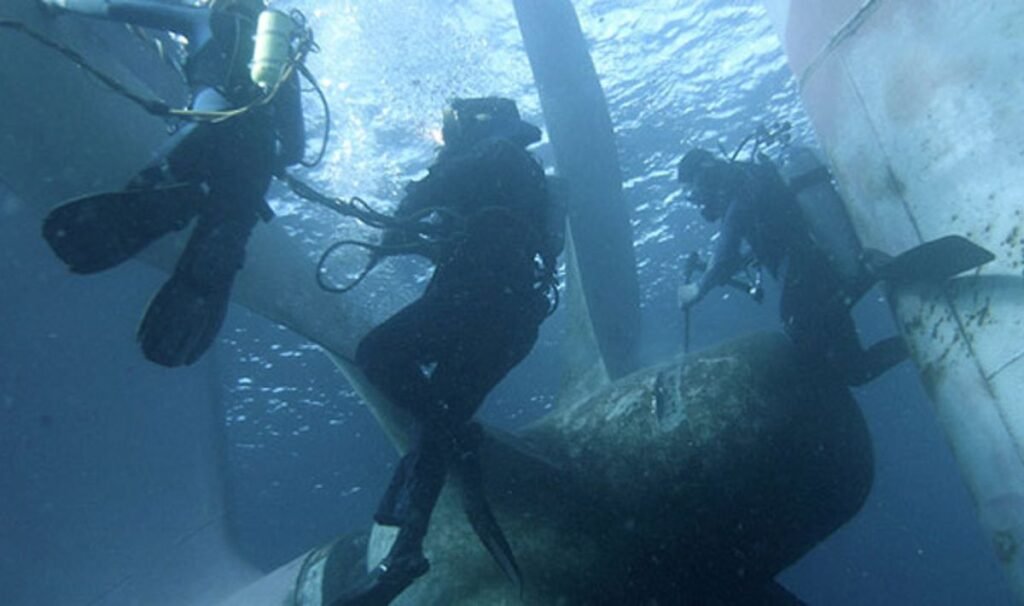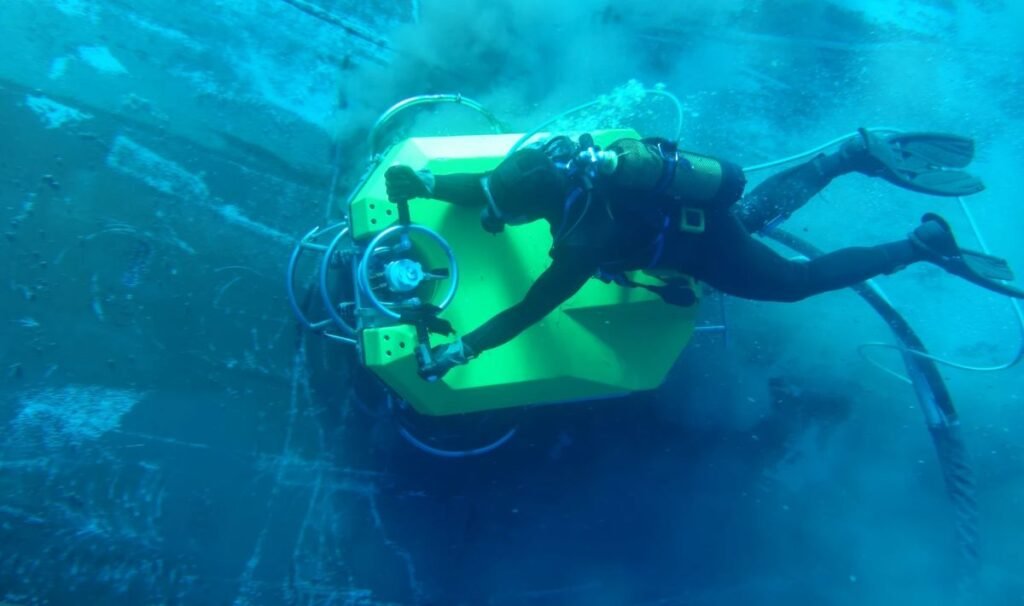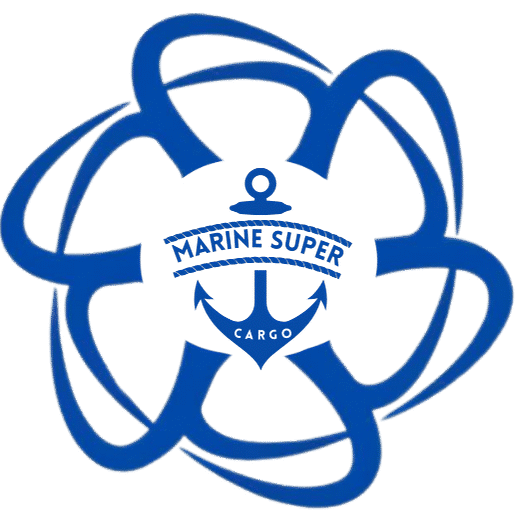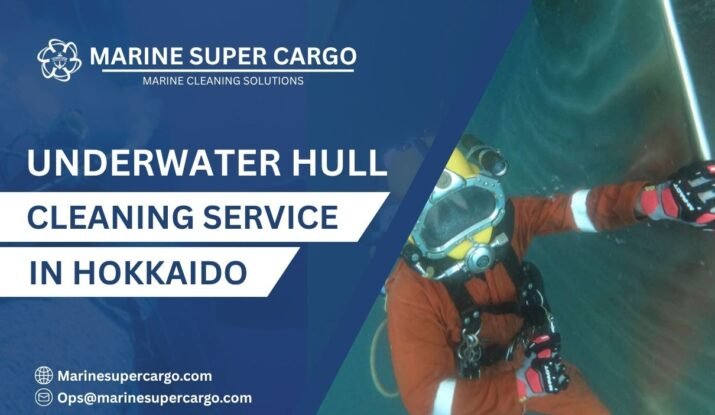The northern gem of Japan, where icy seas meet bustling ports and pristine fishing grounds. Whether you command a cargo vessel, operate a ferry, or cruise for pleasure, one reality lurks beneath the surface: marine fouling. That’s where underwater hull cleaning in Hokkaido comes to the rescue, restoring your ship’s agility, efficiency, and value while protecting the marine environment.
This comprehensive guide dives deep into everything you need to know—from why hull cleaning matters so much up north, to how the work is done safely and sustainably, and how to get the most value from top local services.
Why Underwater Hull Cleaning in Hokkaido Is a Game-Changer for Your Vessel
Imagine running a marathon in heavy boots caked with snow and mud. That’s your vessel, struggling through Hokkaido’s productive, cold waters with a hull loaded with algae and barnacles.
Hull fouling in Hokkaido increases drag, spikes fuel bills, reduces speed, and strains engines. It’s also a major factor in emissions and can even threaten vessel stability and safety. Regular underwater hull cleaning not only lifts these invisible weights but can save you thousands in operational costs and maintenance over time.
The Unique Marine Environment of Hokkaido: What Makes Hull Fouling Such a Challenge?
Hokkaido’s coastline teems with nutrients thanks to a unique cocktail of cold Pacific currents, river outflows, and rich fisheries. This bounty turns every hull into prime real estate for organisms—especially barnacles, mussels, seaweed, and hardier cold-water algae.
Ships docked even for a few weeks can develop a living quilt of fouling, and long, cold winters followed by productive springs mean seasonal boom-and-bust cycles for marine growth. Add to this the region’s role in global shipping, and the stakes for hull cleanliness are higher than ever.

What Exactly Is Underwater Hull Cleaning in Hokkaido?
Hull cleaning Services in Hokkaido are the art and science of removing marine growth from your vessel’s submerged surfaces—while it’s still in the water. Divers or robots gently scrape away slime, barnacles, and seaweed, restoring smoothness and performance without expensive or time-consuming drydockings.
How Marine Fouling Develops on Your Hull and Why It Matters Up North
The cold but nutrient-rich seas of Hokkaido set the scene. Algae, often barely visible, first form a biofilm. Soon after, barnacles, mussels, and other creatures join the party, thickening the hull’s “skin.” This blanket of growth secretly saps your vessel’s speed, gobbles fuel, and can even hide cracks or damage that might endanger voyages.
Top Benefits of Regular Underwater Hull Cleaning in Hokkaido
Slash Fuel Consumption, Boost Speed and Performance
- Removing even thin layers of fouling can restore up to 30% in fuel efficiency.
- Less drag means higher speeds, safer maneuvering, and better handling even in Hokkaido’s infamous winter seas.
- Vessels glide quietly and cleanly, which helps avoid “last-minute” inspection failures or expensive port delays.
Protect Your Hull, Your Investment, and Local Ecosystems
- Marine growth emits acids and degrades paint and metals.
- Frequent cleaning extends hull and coating life, and it’s increasingly required to meet regulations about invasive species transport and emissions.
- Eco-friendly methods protect Hokkaido’s legendary fisheries and marine ecosystems.
The Step-by-Step Process: How Work’s Underwater Hull Cleaning in Hokkaido
Meet the Divers, Equipment, and Technology
- Certified divers are armed with everything from soft rotary brushes to twin brushes and high-pressure cleaning equipment.
- Robots are making headway, especially on larger ships, allowing overnight work with minimal downtime—and some even use filtration to prevent environmental contamination.
- Before any cleaning, detailed inspections are performed, sometimes using HD cameras and video feeds for transparency.
Eco-Friendly Cleaning and Compliance with Hokkaido’s Regulations
- Leading services prioritize containment and mechanical removal—catching debris before it escapes into neighboring waters.
- No chemicals are used; instead, innovative brushes and filtration keep both hull and sea healthy.
- Permission from the port authorities and the coast guard is always obtained, and certified divers comply with society and insurance requirements.
How to Choose the Best Service of Underwater Hull Cleaning in Hokkaido
Certifications, Technology, and Experience to Look For
- Confirm your provider is certified by top maritime organizations (NK, ABS, DNV, RINA, etc.) and insured for diving operations in cold water.
- Ask if they use the latest tech—robotic cleaning, debris containment, and comprehensive inspection reporting.
- Experience in Hokkaido’s challenging waters and with your vessel type is vital.
DIY vs. Professional Underwater Hull Cleaning in Hokkaido: Which Option Is Right for You?
For small boats with light fouling, DIY may work—if you’re experienced and equipped for cold-water diving. But risks like coating damage, missed fouling, and safety hazards are real. For commercial or larger vessels, hiring professionals ensures compliance with IMO standards, safety, and thorough results.
When and How Often Should You Clean Your Hull in Hokkaido?
- Spring and summer see the fastest marine growth; aim for cleaning every 3–6 months.
- Extra cleanings after long idle periods or before international voyages are smart.
- Watch for cue signs: rising fuel bills, stubborn vibrations, slower speeds, or visible fouling near the waterline.

Understanding Costs and the True Value of Underwater Hull Cleaning in Hokkaido
Costs depend on hull size, fouling degree, and extra services like propeller polishing or reporting. While there’s an upfront cost, fuel savings, reduced repairs, and passing inspections nearly always offset the investment.
Pro Tips to Keep Your Hull Cleaner for Longer Between Cleanings
- Use top-grade anti-fouling paints formulated for cold, nutrient-rich northern waters.
- Track vessel performance for sudden changes in speed or fuel use—hidden fouling loves to catch you off guard.
- Build a relationship with a local, reputable diving service for regular maintenance and advice.
- Log each cleaning and inspection; many insurers require records.
Conclusion: Navigating Hokkaido’s Waters with Confidence
Underwater hull cleaning in Hokkaido isn’t just maintenance—it’s a survival skill. By teaming up with professional divers and eco-conscious providers, you unlock smoother, faster, and safer voyages, all while helping preserve the region’s legendary seas for future generations.
Whether you’re moving cargo, fishing, or exploring, make regular underwater hull cleaning in Hokkaido a key part of your vessel care. It’s an investment that pays you back every mile.
FAQ:
Q1. How often should I schedule underwater hull cleaning in Hokkaido?
Most vessels benefit from cleaning every 3 to 6 months, especially in active seasons or after long idle periods.
Q2. Is underwater hull cleaning in Hokkaido safe for the local environment?
Yes—when performed by certified professionals using debris containment and eco-friendly methods, it safeguards local fisheries and marine life.
Q3. Can I perform hull cleaning myself, or should I always hire professionals?
DIY works for small boats with minimal fouling, but professional services ensure safety, thoroughness, and compliance—especially for larger ships.
Q4. What kinds of marine growth are most common on hulls in Hokkaido?
Algae, barnacles, mussels, seaweed, and cold-water biofilm—all thrive in nutrient-rich, chilly waters.
Q5. Does regular underwater hull cleaning support my vessel’s warranty or insurance?
Absolutely. Properly documented, professional maintenance is often a requirement for warranty and insurance compliance.


